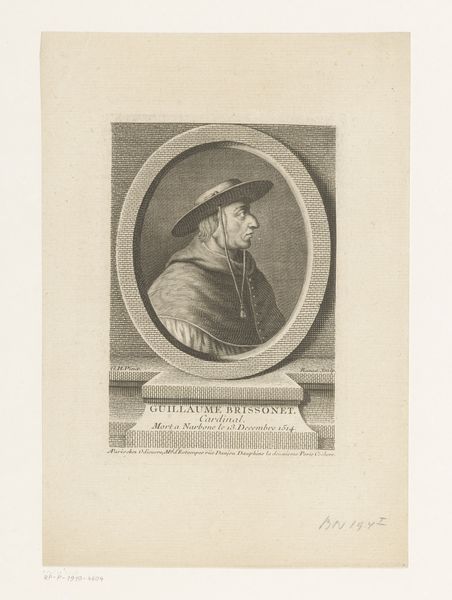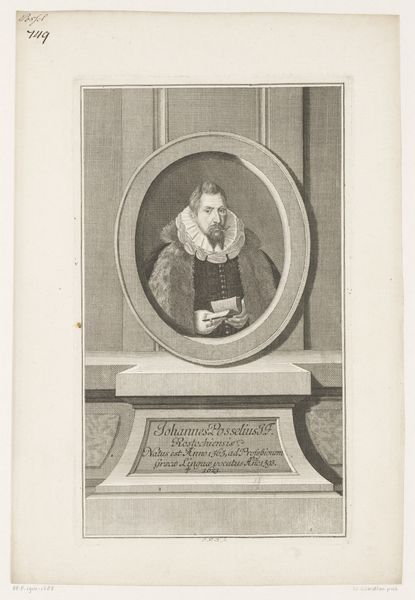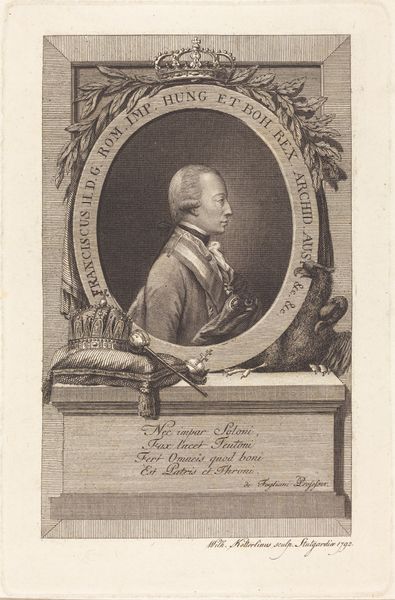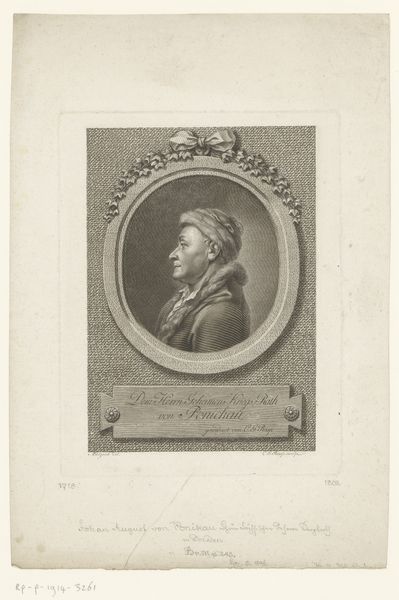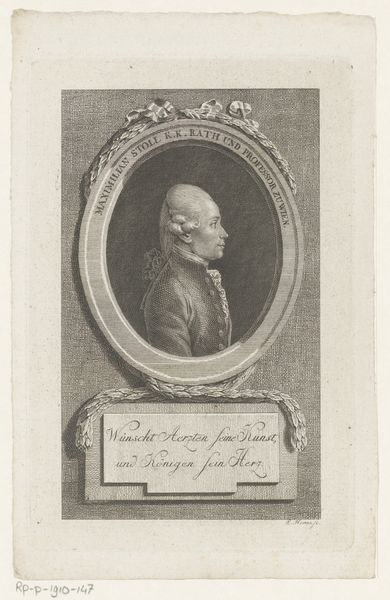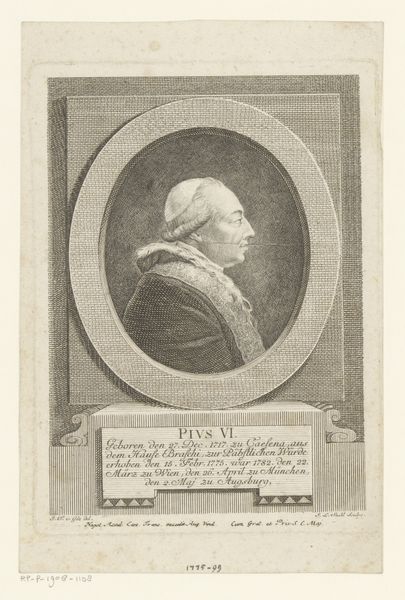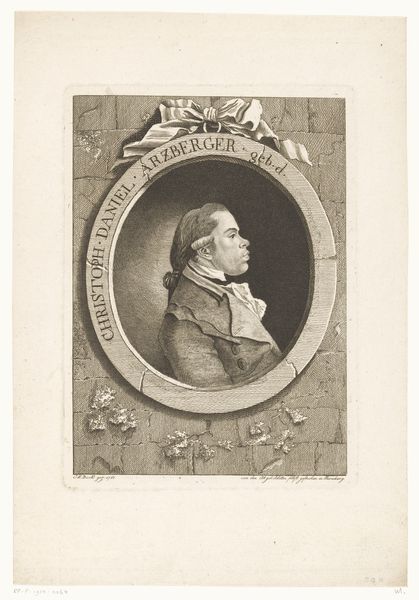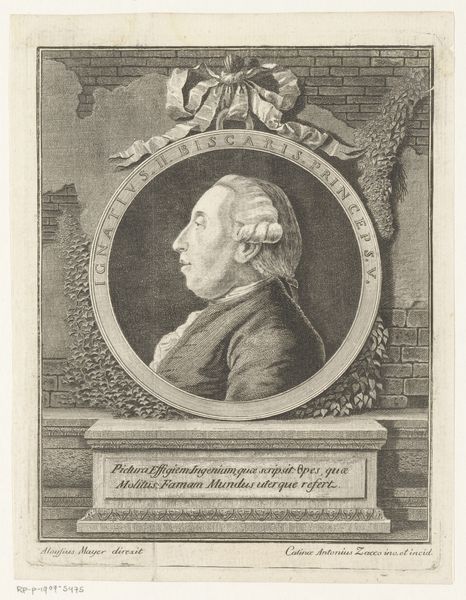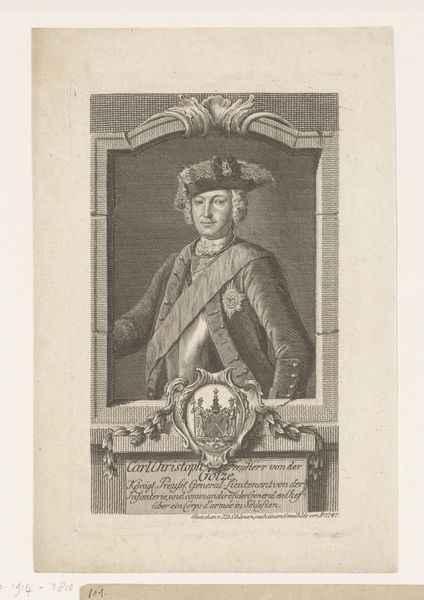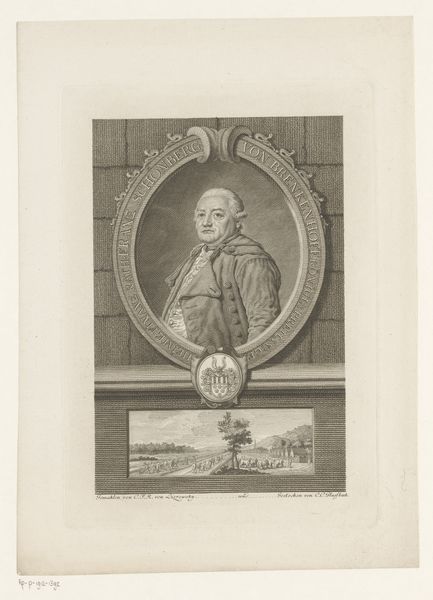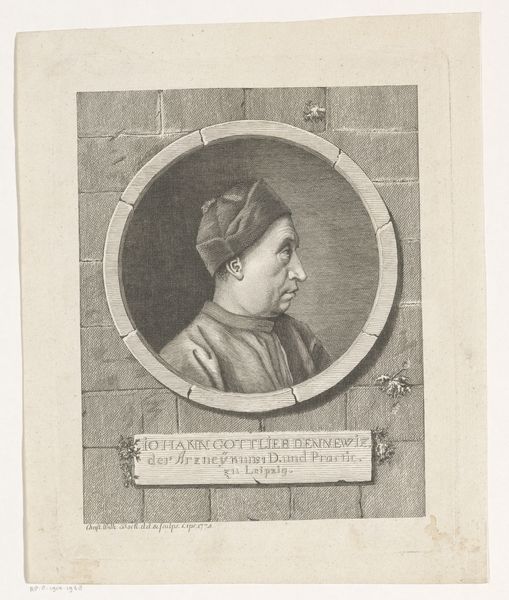
print, engraving
#
portrait
#
baroque
# print
#
old engraving style
#
line
#
engraving
#
realism
Dimensions: height 152 mm, width 96 mm
Copyright: Rijks Museum: Open Domain
Editor: Here we have Johann Martin Bernigeroth's "Portret van Gottfried, abt van Göttweig," from 1739. It's a print, an engraving. It feels very official, like a record of someone important. I'm curious about the way he's framed, almost presented like a monument. What can you tell me about how this artwork functions in its historical context? Curator: Well, consider the subject: an abbot, a figure of significant religious and political power. Engraved portraits like these were crucial for disseminating images of authority in the 18th century. This wasn’t just art; it was a form of visual propaganda. How do you think the print medium itself influenced its reception? Editor: I suppose because it's a print, it can be reproduced and circulated widely. So, it makes sense that a figure who needs to be seen and respected would utilize this technique to proliferate his image. Curator: Exactly! Think about the institutions that commissioned and distributed these portraits: monasteries, political bodies, even wealthy families. This image served to reinforce their authority. How does the portrait style reinforce or subvert these ideas of authority and power? Editor: I see... the precise lines of the engraving and the formal pose add to this feeling of authority. There's not much room for individual interpretation or expressiveness; he’s presented as a figure of unwavering power and responsibility. Curator: And note how he is presented, almost three-dimensionally. It is no accident, especially with the latin dedication, this was a work for the educated classes. Do you think such an artwork like this could ever subvert an authoritative image? Editor: Maybe, if the public context shifted dramatically. A symbol of the old order would need a major change of power or even a revolution to drastically change the portrait’s function. It's all very thought-provoking. I appreciate learning about the interplay between art, power, and society in this specific portrait. Curator: And I enjoyed the dialogue and discovering how the context of the museum or collection could similarly imbue meaning for this image today.
Comments
No comments
Be the first to comment and join the conversation on the ultimate creative platform.
